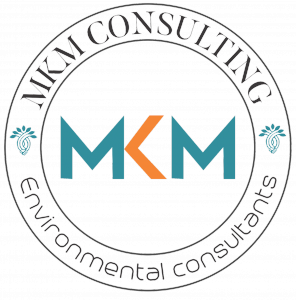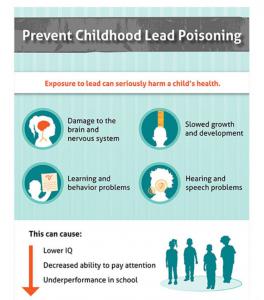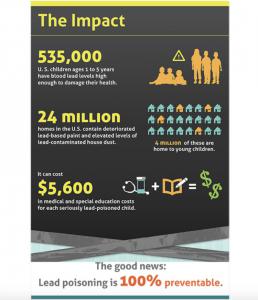Lead Testing and Risk Assessment
Lead is a natural element found in small amounts in the earth’s crust. While it has some beneficial uses, it can be toxic to humans causing health defects.
Lead is a naturally occurring element found in small amounts in the earth’s crust. While it has some beneficial uses, it can be toxic to humans and animals causing of health effects.
Where is Lead Found?
Lead can be found in all parts of our environment – the air, the soil, the water, and even inside our homes. Much of our exposure comes from human activities including the use of fossil fuels including past use of leaded gasoline, some types of industrial facilities, and past use of lead-based paint in homes. Lead and lead compounds have been used in a wide variety of products found in and around our homes, including paint, ceramics, pipes and plumbing materials, solders, gasoline, batteries, ammunition, and cosmetics.
Lead may enter the environment from these past and current uses. Lead can also be emitted into the environment from industrial sources and contaminated sites, such as former lead smelters. While natural levels of lead in soil range between 50 and 400 parts per million, mining, smelting, and refining activities have resulted in substantial increases in lead levels in the environment, especially near mining and smelting sites. This is why lead testing is vital.
When lead is released to the air from industrial sources or vehicles, it may travel long distances before settling to the ground, where it usually sticks to soil particles. Lead may move from soil into ground water depending on the type of lead compound and the characteristics of the soil.
Federal and state regulatory standards have helped to reduce the amount of lead in air, drinking water, soil, consumer products, food, and occupational settings but there is still a need to test for lead.
To determine the presence, type, severity, and location of lead-based paint hazards (including lead hazards in paint, dust, and soil) MKM Environmental Consulting preforms an on-site Lead Risk Assessment and/or an Inspection. A risk assessment is an on-site investigation. Risk assessments can be legally performed only by certified risk assessors. Lead-based paint risk assessments are particularly helpful in determining sources of current exposure and in designing possible solutions.
You can also have a combined inspection and risk assessment. With any of these options, MKM will provide you with a written report of findings.
Who is at Risk?
Children: Lead is particularly dangerous to children because their growing bodies absorb more lead than adults do and their brains and nervous systems are more sensitive to the damaging effects of lead. Babies and young children can also be more highly exposed to lead because they often put their hands and other objects that can have lead from dust or soil on them into their mouths. Children may also be exposed to lead by eating and drinking food or water containing lead or from dishes or glasses that contain lead, inhaling lead dust from lead-based paint or lead-contaminated soil or from playing with toys with lead paint.
Adults, Including Pregnant Women: Adults may be exposed to lead by eating and drinking food or water containing lead or from dishes or glasses that contain lead. They may also breath lead dust by spending time in areas where lead-based paint is deteriorating, and during renovation or repair work that disturbs painted surfaces in older homes and buildings. Working in a job or engaging in hobbies where lead is used, such as making stained glass, can increase exposure as can certain folk remedies containing lead. A pregnant woman’s exposure to lead from these sources is of particular concern because it can result in exposure to her developing baby.
When Should I have my Home Tested for Lead?
Your child has been diagnosed as having lead poisoning. The most common home-based source of lead exposure is deteriorating lead-based paint and the resulting dust.
You live in a home built before 1978 where small children are or will be living.
You are about to remodel or do anything that will disturb lead-based paint or generate lead-based paint dust and chips that can harm you and your family.
You are renting or buying a home. When buying a home, federal law allows the purchaser the opportunity to conduct testing to determine whether lead-based paint or lead-based paint hazards are present. This is especially important if you have (or plan to have) young children in the home. Learn your rights before buying a home.
You are concerned about possible lead exposure to you, your family and pets, or visitors.
Michal Koscinski
MKM Environmental
+1 718-551-5989
email us here
Visit us on social media:
Facebook
LinkedIn
Legal Disclaimer:
EIN Presswire provides this news content "as is" without warranty of any kind. We do not accept any responsibility or liability for the accuracy, content, images, videos, licenses, completeness, legality, or reliability of the information contained in this article. If you have any complaints or copyright issues related to this article, kindly contact the author above.



